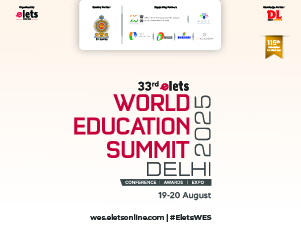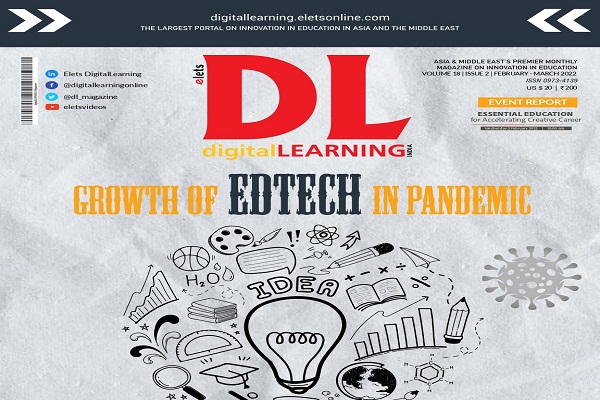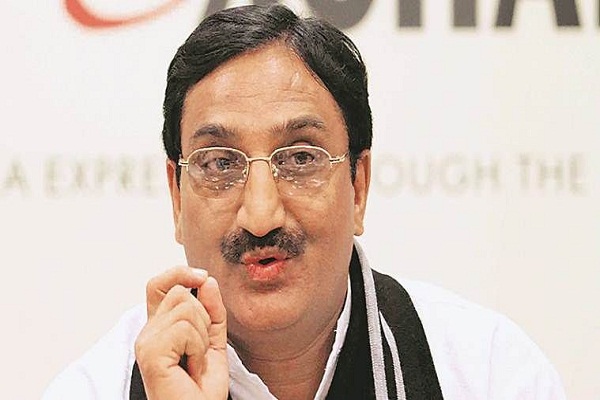
It is not the question of employability; it is the question of the students’ actual way of moving ahead, says Manpreet
Singh Manna, Director, All India Council For Technical Education (AICTE), in an interview with Elets News Network (ENN).
Students’ Employability Quotient is much-talked about. What is your opinion in context to India’s scenario?

When we talk about students’ employability, we have to first clear the concept of employability. As per trends, 20 to 25 per cent students always follow their parental occupation. When we collect figures, around 40 to 50 per cent get placement. Then immediately we start blaming institutions, regulatory bodies and other teaching-learning communities, saying that our students are unemployable. It is not the question of employability; it is the question of the students’ actual way of moving ahead.
A person who completes any education system in our country, either graduation in Humanities, Engineering or Medical Science — that person is very much employable. The only question is, what he/she deserves and gets; because of resistance, recession and policy. Suppose, if an MBBS graduate doesn’t get a break in a good private hospital, he/she may approach government hospital. If the government hospitals are limited, there will be limited scope of vacancies, and he pursues higher education or may look for the career outside the country. Otherwise, India’s education system is one of the best and largest education systems.
To provide students exposure of the outside world, we have signed MoUs with all MSMEs (Micro, Small and Medium Enterprises) of the country to provide them internships. We have also signed MoUs with 4-5 good organisations for the potential students to come and join as interns or trainees. They have a portal for students passing, or passed, their degrees to fetch inputs free of cost. So students will come to know their liking, their areas of expertise which industries are looking for, and even get POPs (Performance Oriented Packaging) and eventually get placement. So, employability cannot be that fear factor as it is existing in the present scenario.
Another image changing aspect is the “Smart India Hackathon”, wherein students can get live projects by different Ministries of the Government of India — to first solve on the paper, then on code, and then finally build an application or a software. Soon, we will also start Hardware Hackathon. Students’ handhold has to be improved, otherwise these engineers will be nowhere engineers.
A major role of the university is to evaluate students, confer degrees as well as revise the curriculum as per today’s industry, country and global need.
How the AICTE imparts skills in the higher education?
The AICTE imparts skills to students through a number of projects. For example, the Government of India has started the world’s largest MOOCs (Massive Open Online Courses) programme known as SWAYAM (Study Webs of Active-Learning for Young Aspiring Minds).
In the classroom or through curriculum structure, students generally get 60 to 70 per cent theoretical knowledge, of which 70 per cent is captured through labs. Being in a campus lab, students may not get that hand-hold opportunity.
The “Tinkering Lab” concept started in the school and higher education has become a great success. As on today, more than two lakh students in the school education system have access to tinkering labs. Through SWAYAM, we provide videos for students; before going to the lab one can learn how to connect instruments, how to troubleshoot, how to do soldering, etc.
All kinds of philosophy, concepts are available on the platform, as without a proper skill, any engineer or graduate can feel that fear factor; and think of himself or herself as incompetent for the job. We must remember jobs don’t exactly require a bookish knowledge or what you learnt.
What inspired to introduce AICTE New Model Curriculum?
Previously, there were around 20 technical universities in India. An Act was passed mandating each State to have one technical university in which all the technical institutions of that State could be governed.
A major role of the university is to evaluate students, confer degrees as well as revise the curriculum as per today’s industry, country and global need. But some of the States were unable to revise it on time or revise as per the taste of the industry. So a mismatch in the curriculum was witnessed from one State to another State, one college to another college, one institute to another institute which confused students a lot. Many industries were choosing the students passing out from a particular university/college/institute because their curriculum matched their needs, thus followed the unrest.
The AICTE then formed a board which conducted a survey throughout the country — taking inputs from stakeholders, faculty, directors, deans, HoDs, students and industries — to create a new model curriculum based on inputs from academia and industry. It is not a mandatory engineering course.
We have asked universities to take at least 70 per cent from the new model curriculum. They can tweak the remaining 30 per cent as per the local area’s demands so that a uniform curriculum can be taught in the engineering system of the country to make each and every student employable and competitive enough to take any competitive exam of the country or of other countries. Many universities have already started to implement the new model curriculum.
How important is participation from the State governments to expedite the Centre sponsored schemes?
Any policy, any scheme, which is going to be launched by the Government of India cannot achieve expected level of success until and unless all the State Governments come forward to follow it without any ego, without any confusion.
Particularly for SWAYAM, we are not getting any kind of resistance because the platform is governed by nine national coordinators. The AICTE is also one of the national coordinators for all intra-disciplinary, international and private university courses. As on today, SWAYAM has more than 1,200 courses on the platform, of which some were run in the last semester, some are running and some are being run in the upcoming semesters.
India has nearly 800 universities. AICTE being an affiliating body; their syndicate, their academic concept, their board of studies have to be approved from the SWAYAM basket to offer the course for their respective constituent’s college students.
The National Student Startup Policy can be effectively implemented if the student, faculty, director/vice-chancellor and the State government come together to give innovation a final shape.
Unless they publish the list, students cannot benefit from the choice-based credit system (CBCS) of our country. It was a historical step taken in 2016, when the Government of India Gazette notification declared that any student pursuing graduation through UGC system, either college or university; or pursuing diploma and degree from the AICTE system, can earn 20 per cent choice-based credit through SWAYAM platform.
This means a student pursuing B. Tech, who wants drama or journalism or music as one of the elective subjects, can avail the credit. This can be feasible only if the hosting university and parent university and the teacher delivering the course on SWAYAM match.
The platform is a supplement or value addition to the current system. Teachers need not fear; chalk and duster system cannot be replaced with any kind of system. Any student who wants to enhance knowledge can visit SWAYAM and access content without any cost.
How can AICTE National Student Startup Policy be effectively implemented in all States?
In India, the skill development is basically a ‘jugaad technology’ which is very famous throughout the world, and we Indians are not utilising whereas others are learning and implementing it at their respective countries. Why can’t our students start implementing this jugaad technology in the incubation centre and later even file patents?
Our patent filing is at a very low rank. With the effort of the Government of India, we are at 60th rank from 85th rank in patent filing, as per global innovation index. Also, India is the third best consumer in the world. The National Student Startup Policy can be effectively implemented if the student, faculty, director/vice-chancellor and the State government come together to give innovation a final shape.



























